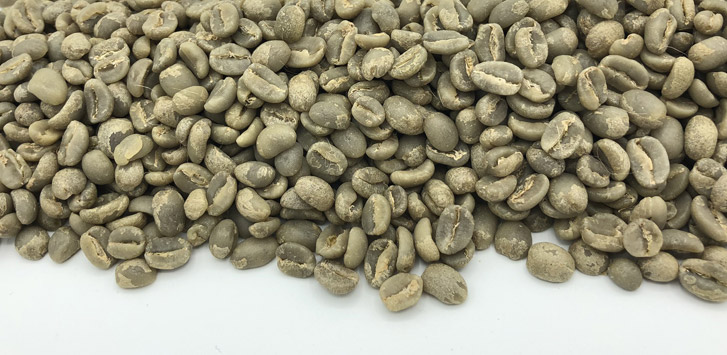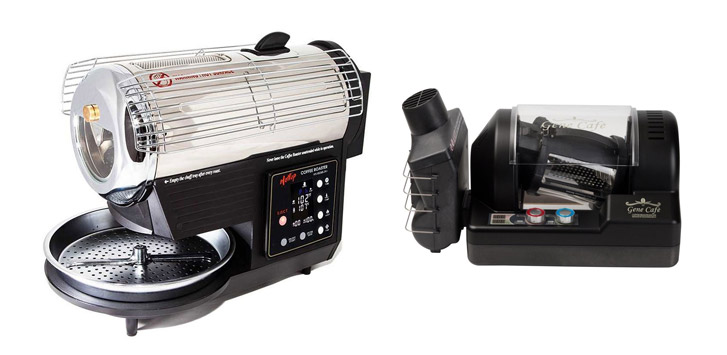Wouldn’t you love to be in control of having your own perfectly roasted coffee beans all the time? Roasting your own beans is the best way to consistently have good coffee, but it can feel intimidating at first. That’s why we are taking a deeper dive into the most common roasting mistakes and how to avoid them.
Hopefully, this guide helps you feel confident enough to take on the challenge of roasting coffee beans at home.

Mistake #1: Not Researching Your Green Coffee Beans
The number one mistake people make when roasting coffee beans is not knowing enough about them. Environmental effects - such as temperature, elevation, and soil composition - impact the coffee's flavors. Not accounting for these specifics can cause roast defects, ruining the coffee's flavor. Understanding the beans you are using is the first step to the best tasting coffee.
Mistake #2: Not Knowing How Your Coffee Roasting Equipment Works
Simply put, roasting is about the movement of the beans in a heated mechanism. Any style of roasting equipment - whether it be drum, hybrid, hot air popper, or pan - uses movement to distribute heat.
No matter what type of roasting machine you choose, to get the best roast results, you must understand how it works. The proper use of your roaster will affect your roast through temperature, airflow, and roast time. You can check your coffee roaster's manual to learn how it works or ask us any questions you may have!
Mistake #3: Not Researching How to Roast Before You Start
Understanding the beans themselves is the first step to figuring out the proper way to roast them. Factors, like moisture and density, are different in each varietal and affect the roasting process. When not catering to density and moisture, your roast may have defects. So don't forget to look into the needs of your specific beans before beginning your roast.

Mistake #4: Not Preheating Your Roasting Equipment
When setting yourself up for a successful roast, you must allow your machinery time to warm up. As simple as this may sound, you want to make sure your roaster reaches the temperature needed before starting. If the temperature does not match the charge indicator when you begin roasting, your beans will likely roast inconsistently.
Mistake #5: Not Understanding Your Roaster’s Bean Capacity
After learning about your coffee roaster, it's important to understand its limitations. We all understand capacities on appliances, but why would that affect our roast? If you overload your coffee roaster, you will get an uneven roast.
Overloaded roasters cannot reach the necessary temperature to evenly roast the beans. If you're aiming for a light roast, you may even miss the first crack because the beans are roasting inconsistently.
Mistake #6: Setting Your Roaster on AutoPilot
Watching your beans roast may seem boring, but it's important to pay attention and take notes during this step. We have already established many different things affect your roast. Taking the time to observe and write down the different variables will help you make consistent roasts.
Focus on your beans, without distractions, to understand what works and what doesn't for you. Any notes you take will help you replicate this roast in the future.
If your roast does not turn out as desired, you can go back and change one item at a time. Hopefully, this will help you achieve your perfect roast. This method of quality control will pay off with consistently good roasts.
Mistake #7: Under Roasting, Scorching, or Baking Your Coffee Beans
Roast defects come from many different errors, but your machines are not at fault. Underdeveloped beans are the most common defect. Not allowing the roast to completely finish causes these defects.
Roasting your beans too quickly keeps the sugars from developing. This leaves you with an earthy texture and flavor almost like grass.
On the opposite end, roasting your beans too long will cause the flavor to be more burnt, bitter, and even ashy. In overdeveloped beans, you will likely scorch or bake your beans. Paying close attention after the first crack can help you avoid burning the bean.
If you're tracking the roast on your computer, you can look at the chart to determine if your bean is overdeveloped. Look at the rate of rise to see if the temperature is at a consistent decline. This will help you avoid any potential defects.
You can learn more about roast types and other relevant coffee lingo at our Coffee Glossary.
Mistake #8: Not Regularly Cleaning Your Equipment, Including the Chaff Container
Cleaning your roasting machinery helps you avoid a potential fire caused by a full chaff container. It's important to note that chaff is highly flammable. When you do not keep the roasters clean and the container is not empty, there is a high fire risk.
Having a dirty roaster also wears the machine down much quicker. You should avoid any buildup. It keeps you safer and creates a better roast.

Mistake #9: Not Cupping Your Roasts
Coffee cupping helps establish an understanding of the flavor profiles in your particular roast. If you are not cupping when roasting your beans, you will be unable to identify any need for adjustments. When you are cupping, make note of the flavors and aromas you can identify. You can use our coffee flavor wheel to help you get started if you've never cupped coffee before.
Mistake #10: Not Letting Your Roasted Coffee Beans Degas Before Brewing
Resting your beans after roasting will allow the flavors to complete themselves. When you have reached your desired level of roast, you can start cooling the coffee beans. This will stop the roast from developing further.
If you don't cool your coffee beans, you will let the roast continue. If not cooled, the carbon dioxide buildup from roasting will not have a chance to dissipate. Be sure to let the beans degas for full flavor, carbon dioxide release, and to complete the roasting.
Mistake #11: Not Checking Your Roaster Temperature Between Roasts
As mentioned earlier, your roaster temperature is very important to the proper development of the beans. It's also important to verify the temperature between batches. A good roast hinges on the temperature of your machinery.
Conclusion
Common mistakes are, just that, common. With all the steps in the roasting process, it is easy to get hung up on one or another. There are many little mistakes a first time (or even experienced) roaster can make.
Just remember, take the time to understand your machine, and observe each batch to continuously improve your roasting skills. Roasting coffee is a journey. Don't forget to enjoy the ride!